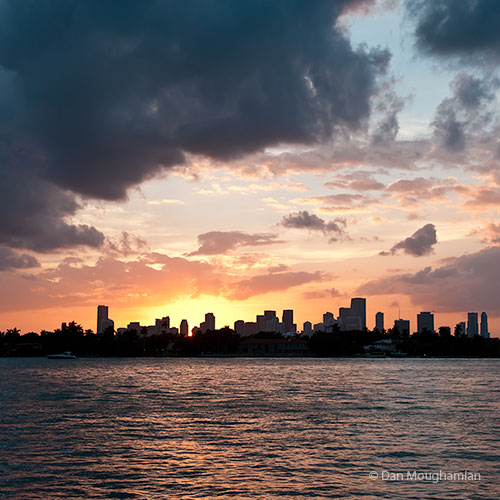Welcome to Day 5 of Landscape week.
So far this week we’ve covered three essential tips for shooting landscapes, and looked at a number of great photography books, tripods and camera backpacks that are all designed for outdoor photographers. Today we close out the week with a lens review of the Nikkor AF-S 24-120mm f4G ED VR, written by guest blogger, Dan Moughamian.

——–
As a photographer I spend much of my time outdoors, exploring the landscapes and cityscapes, photographing as I go. I rarely know ahead of time exactly which focal lengths I’m likely to use, how close I’ll need to get to a subject, etc. For this reason I have always used Nikkor zoom lenses from Nikon. The zoom provides the flexibility I need to keep from constantly swapping lenses on my Nikon D700. One of the drawbacks of pro zooms though, is that they tend to be heavy, and they usually cover a somewhat limited focal range when they carry a fast aperture.
For example, the Nikkor AF-S 24-70mm f/2.8 is a fantastic lens, but if you need to really reach out and grab a distant subject, 70mm is not going to cut it most of the time. It’s also fairly large and heavy as standard zooms go. A full compliment of Nikkor pro zooms could include the above-noted lens, the AF-S 14-24mm f/2.8 on the wide angle side, and the new AF-S 70-200mm f/2.8 VR II on the telephoto side. That camera bag will get heavy in a hurry!
Enter the new AF-S 24-120mm f/4 zoom with 2nd Generation Vibration Reduction technology from Nikon. Rarely does a lens come along that has both a wide focal range and professional grade optics, while maintaining a relatively fast aperture through the entire focal range. This lens has all of those qualities and allows me to shoot close-in macro shots and wide landscapes equally well.
The first thing I noticed is that the lens balances very well when hand-held on my D700. It doesn’t create a front- or back-heavy feeling, and the zoom and focus rings are situated in the perfect spot. Essentially I can balance the lens near the base of my index finger, while using my thumb and index fingers to quickly rotate either the zoom or focus ring without moving my hand around. Also worth noting is that the Manual/Automatic focus switch, the VR switch, and the VR Mode switch are all easily adjusted my thumb as well (on the balancing hand).
The only complaint that I have about the ergonomics is that the focus ring is narrow and can be a little difficult to find by feel, if you have any kind of glove or protective outerwear on your finger tips when shooting. This past weekend I was shooting in a wet, snowy environment with fingerless gloves and one covered thumb, but I did have to stop, look and place my (slightly numb) fingers on the right spot two or three times. Not a major issue but worth noting if you’ve had this problem with other lenses before.
Performance-wise, this lens does a great job, considering the focal length it covers. It even does well with some Macro subjects, although the minimum focus distance (about 1.5’) is not comparable to a true macro lens. The Vibration Reduction feature is pretty amazing. I’m out there shivering in the snow, trying to use my elbows (pulled into my chest) as the makeshift tripod, and I’m thinking, “there’s no way the VR is going to work like this”. I could see clearly through the finder that I wasn’t holding the camera steady, but it worked. Repeatedly. I think in most shooting situations, you won’t need the “Active” mode, which really kicks the VR into high gear.
The auto-focus also works seamlessly, which is what you’d expect from an AF-S lens. During two full days of relatively low contrast lighting, I only had one or two instances of “focus seeking” where the lens focus switched rapidly between adjacent objects or textures, forcing me to change the zoom slightly and refocus. Bokeh at F4 and is decent when zoomed in on close-by subjects. Optically the glass produces very sharp detail and accurate colors, with modest vignetting at the low end of the aperture spectrum.
While the MSRP isn’t cheap, at $1299 this lens is a solid value considering what it delivers. High quality optics, easy to work with on the camera, light weight, and can work equally well for portraits, landscapes or macro. How many lenses can you say that about? Highly Recommended.
###
Dan Moughamian is a photographer based near Chicago, and is the author of Adobe Digital Imaging How-Tos: 100 Essential Techniques for Photoshop CS5, Lightroom 3 and ACR 6. You can read more of his writings and check out his free Photoshop and Lightroom tutorials at Colortrails.com.




Great mini-review, Daniel, thank you. After reading this review and a few others, I ordered this lens with my D700 body (currently with a $300 savings from Nikon), so essentially this lens cost me less than $900. It won’t be my only lens (I’m getting a couple fast primes as well) but I have a feeling it’s going to be my everyday workhorse lens.
The reviews of this lens have been very strange, they seem to either be effusive or completely on the other end. I can only think they must have some QC issues, so I would be careful to check everything out when you get one.
This lens may the best kept secret in the Nikkor arsenal, yes, it is a compromise lens, but seems to have done about the best possible in the overlap of optical quality, performance, flexibility and range, and price.
Nigel, thanks for your comment. Glad you found the review useful- best of luck with your new lens!